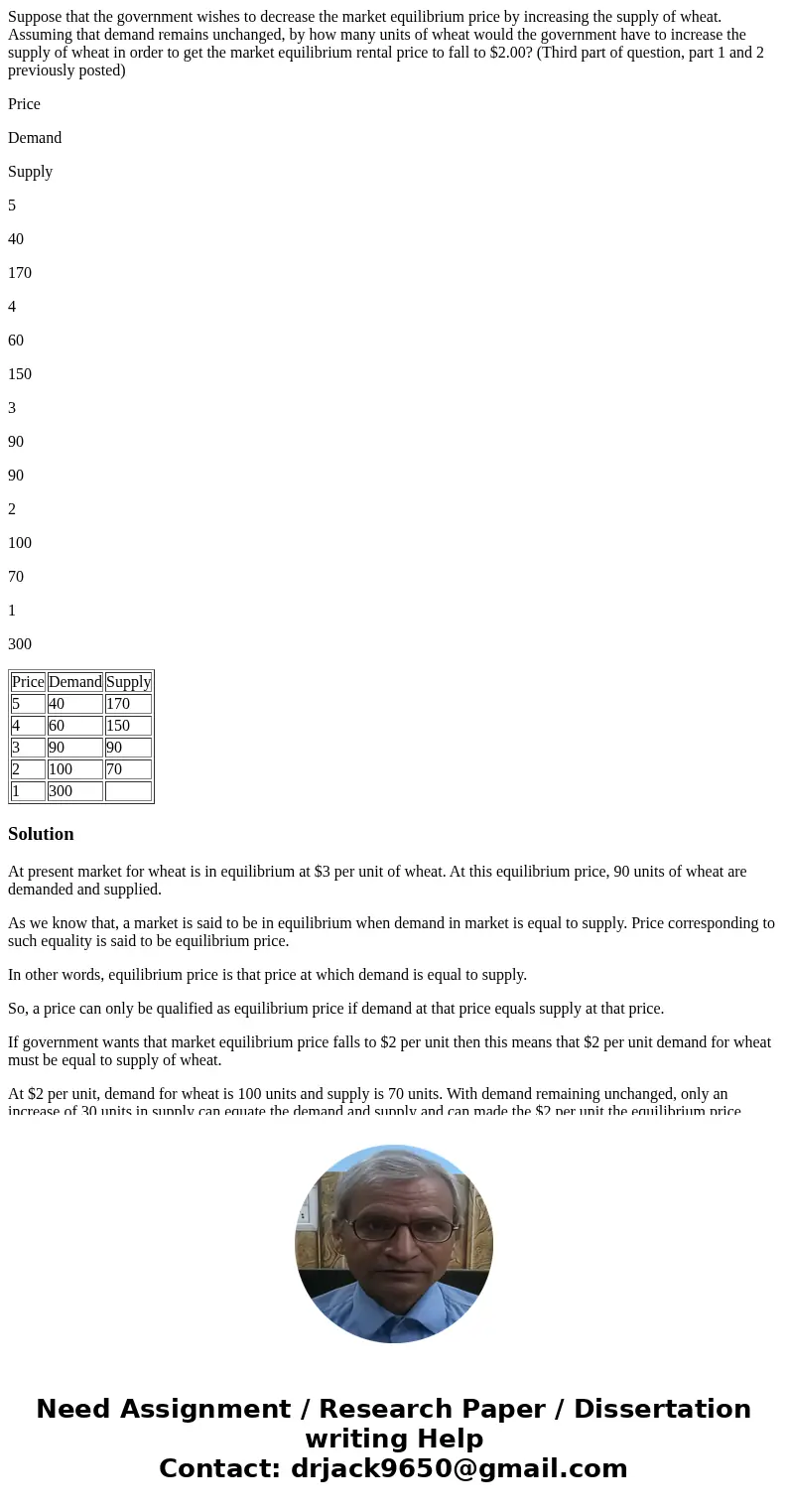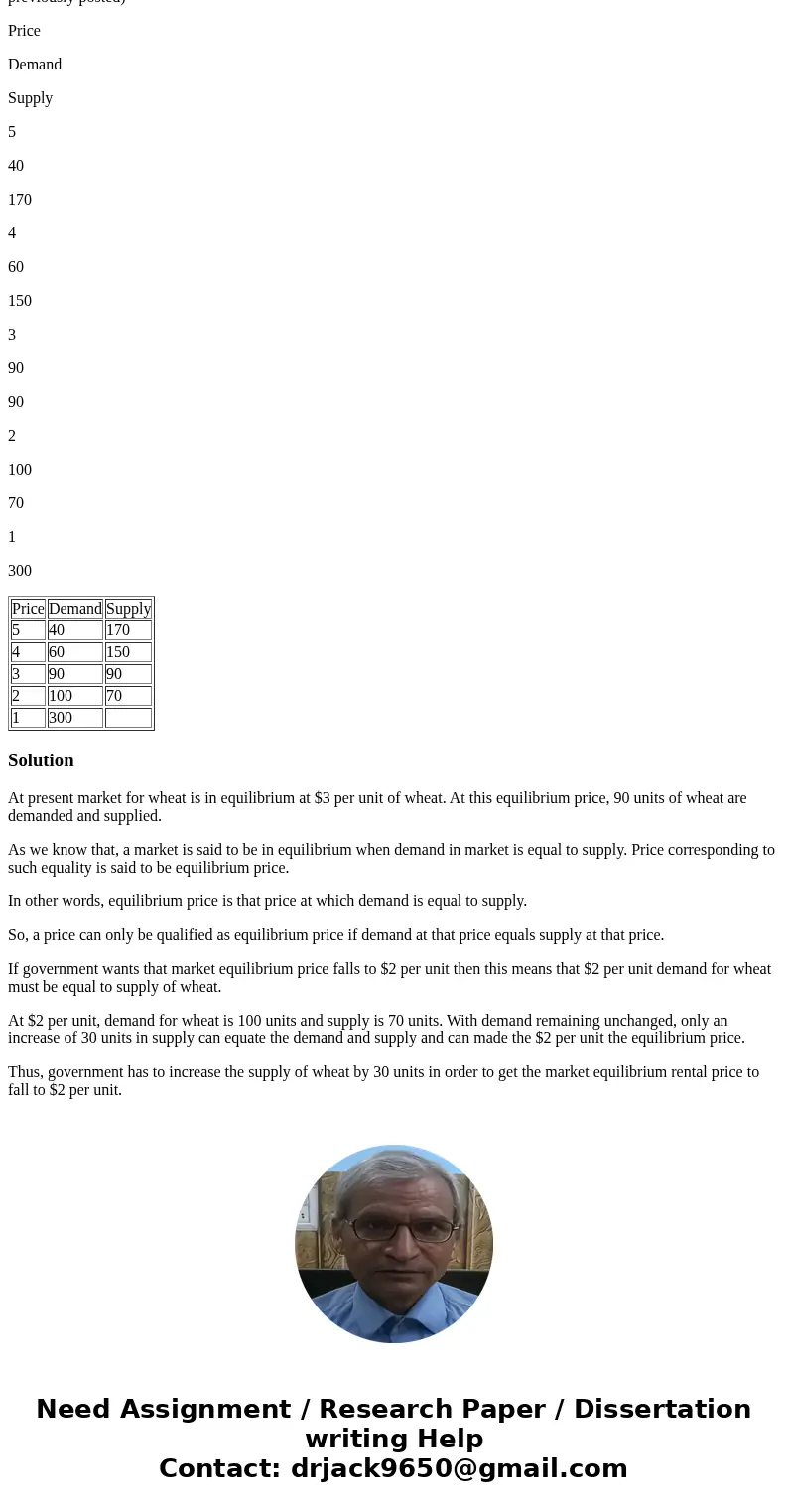Suppose that the government wishes to decrease the market eq
Suppose that the government wishes to decrease the market equilibrium price by increasing the supply of wheat. Assuming that demand remains unchanged, by how many units of wheat would the government have to increase the supply of wheat in order to get the market equilibrium rental price to fall to $2.00? (Third part of question, part 1 and 2 previously posted)
Price
Demand
Supply
5
40
170
4
60
150
3
90
90
2
100
70
1
300
| Price | Demand | Supply |
| 5 | 40 | 170 |
| 4 | 60 | 150 |
| 3 | 90 | 90 |
| 2 | 100 | 70 |
| 1 | 300 |
Solution
At present market for wheat is in equilibrium at $3 per unit of wheat. At this equilibrium price, 90 units of wheat are demanded and supplied.
As we know that, a market is said to be in equilibrium when demand in market is equal to supply. Price corresponding to such equality is said to be equilibrium price.
In other words, equilibrium price is that price at which demand is equal to supply.
So, a price can only be qualified as equilibrium price if demand at that price equals supply at that price.
If government wants that market equilibrium price falls to $2 per unit then this means that $2 per unit demand for wheat must be equal to supply of wheat.
At $2 per unit, demand for wheat is 100 units and supply is 70 units. With demand remaining unchanged, only an increase of 30 units in supply can equate the demand and supply and can made the $2 per unit the equilibrium price.
Thus, government has to increase the supply of wheat by 30 units in order to get the market equilibrium rental price to fall to $2 per unit.


 Homework Sourse
Homework Sourse